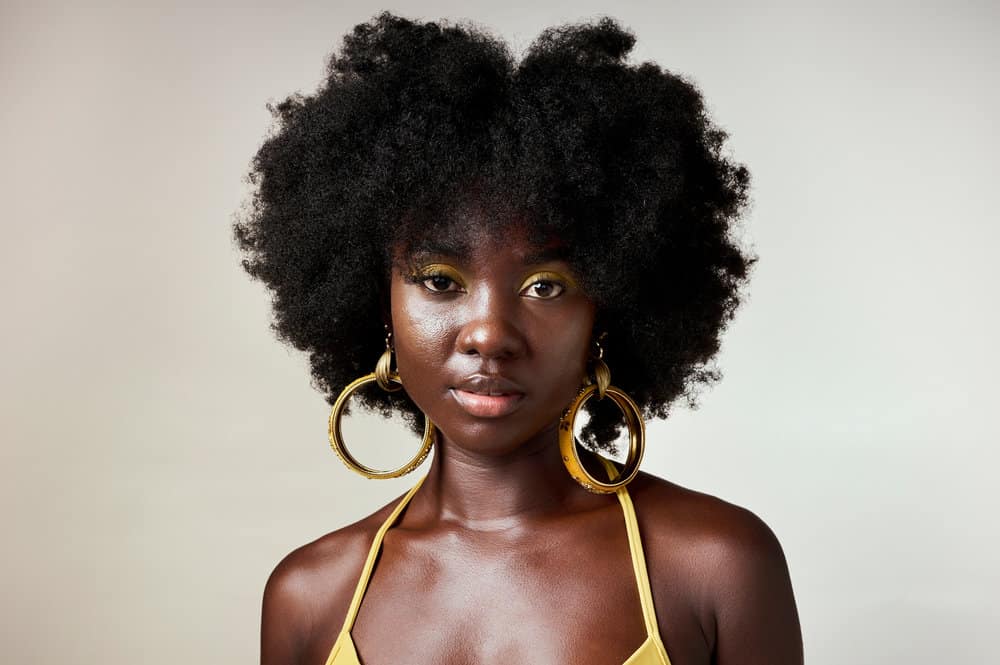
Low-porosity hair is often difficult to grow because of its natural resistance to moisture. When you add the 4C hair texture to the mix (which is naturally dry and prone to breakage), it gets even harder to retain length.
If you have low porosity 4C hair, you might feel like you'll never reach your hair length goals, but that couldn't be further from the truth! In this article, we'll give you some tried-and-true tips you can use today to grow low-porosity hair. Let's get right into it!
Table of Contents
- 1 What Is Low Porosity Hair?
- 2 Why It's Hard to Grow 4C Hair
- 3 How to Grow Low Porosity 4C Hair
- 4 Add Heat to Your Deep Conditioning Sessions
- 5 Deep Condition Often
- 6 Deep Condition Correctly
- 7 Be Careful About How You Style Your Hair
- 8 Choose Lightweight Products
- 9 Keep Buildup at Bay
- 10 Minimize Heat Application
- 11 Avoid Chemical Processing
What Is Low Porosity Hair?
Low porosity hair has flat, closed cuticles that don't easily let in water, moisture, or products. That means that when you apply hair products to your hair, the products will sit on top of your hair strands rather than penetrate your strands. That's why low-porosity hair often seems dry.
To grow low-porosity hair, you need to ensure that your strands stay moisturized, and that's what you'll focus on in your natural hair regimen.
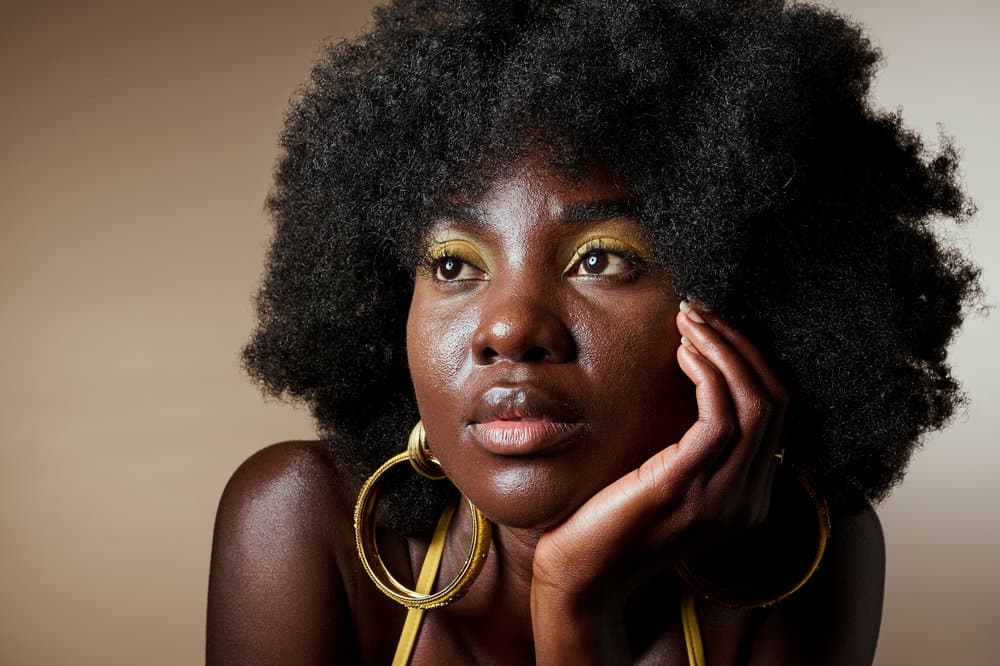
Do You Have Low Porosity Hair?
The truth is that many think they have low porosity hair when they don’t. So, we encourage you to take a moment to determine whether you have low-porosity hair. If you don't, then the tips given later on in this article may not be beneficial to your hair.
Here are some signs that you may have low porosity hair:
- Your hair takes a very long time to dry. While those with medium and high porosity hair don't have to wait forever for their hair to dry, those with low porosity hair do. In some cases, you may have to wait up to 24 hours or longer for your hair to dry on wash day.
- Your hair is often dry and brittle. The dryness may persist after it seems like you've done everything.
- It may take time for water to be absorbed into your hair. When you run shower water on your hair, the water may sit on top of your hair for a while before it is absorbed - it'll first look like little beads of dew.
- Your hair care products don't seem to penetrate your hair. As a result, you may notice white flakes or gunky buildup wherever you apply the product.
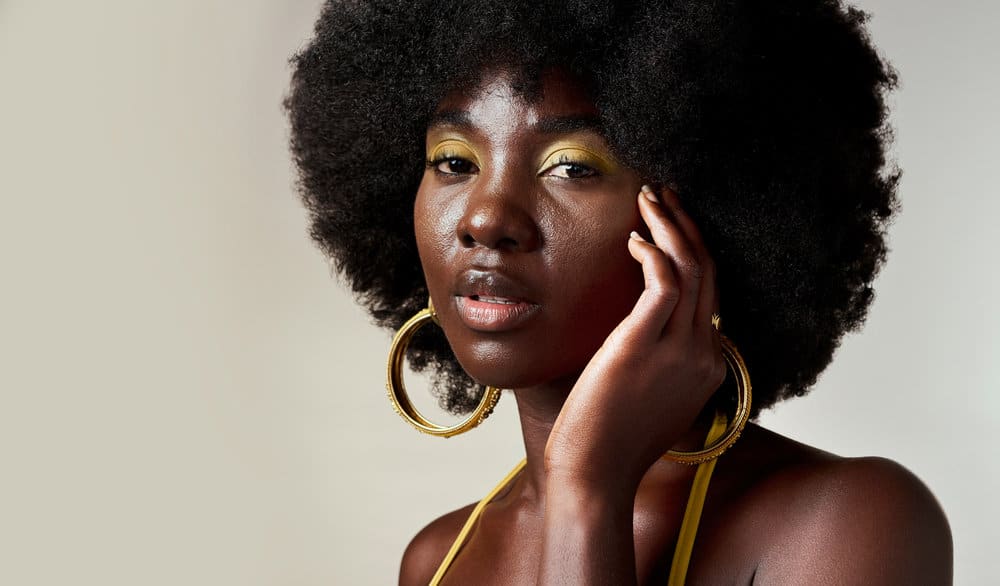
Why It's Hard to Grow 4C Hair
4C hair is known to be the hardest hair type to grow out of all hair types. The issue is that 4C hair is so curly that the scalp oils have a rough time making it down the hair strands. The result is perpetually dry hair that's brittle and prone to breakage, and hard to grow out.
How to Grow Low Porosity 4C Hair
If you have low porosity 4C hair, chances are you've tried several hair growth remedies and tricks without success. But don't be discouraged.
There are substantive tips out there that can give you the results you've been longing for. In this section, we'll share with you some tips to transform your hair growth regimen fast!
Add Heat to Your Deep Conditioning Sessions
Deep conditioning sessions are credited with transforming dry, brittle, broken hair into long, healthy locks. The thing that makes these hair treatments so great is that they give hair the hydration and nourishment it needs to be resilient during hair care and styling.
Deep conditioners and hair masks may also leave behind a protective film to shield your strands from external pollutants, UV rays, and more. The result is longer, healthier hair.
You may have tried hair masks and deep conditioners on your low-porosity hair and found that they don't work the way you expected.
That's not unheard of for low porosity hair - the hair cuticles are bound so tightly that they won't always let the nutrients and moisture from the deep conditioner or hair mask in. So, how do you get your deep conditioner to do what it's designed to do?
You add heat to the mix, but not just any heat - the heat we're referring to is indirect heat, like the heat from your head (using a plastic cap) or a blow dryer.
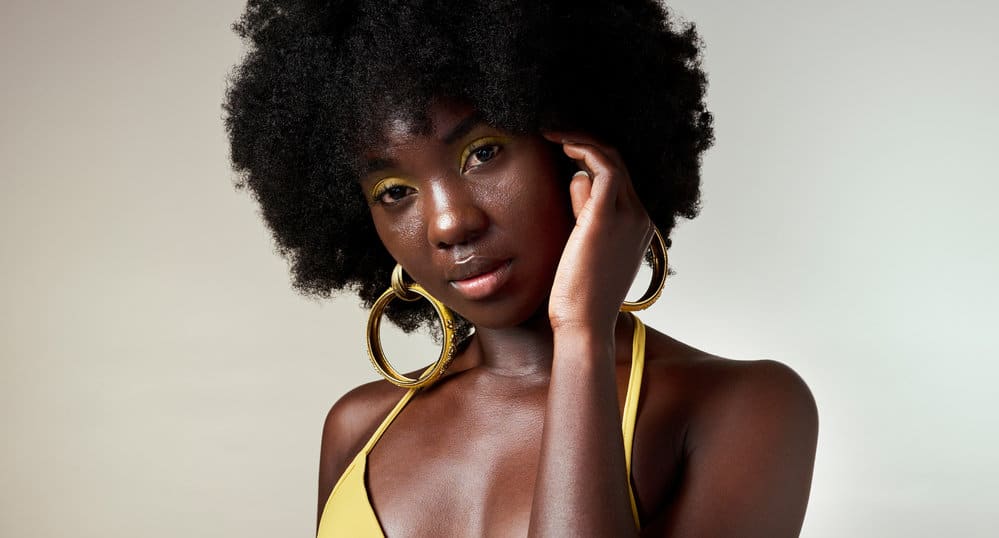
Benefits of Indirect Heat During Deep Conditioning for 4C Hair
Indirect heat does several great things to your hair during any deep conditioning session, and they include:
Open up Your Hair Cuticles
Stubborn low-porosity hair cuticles can thwart any deep conditioning session. But when you introduce indirect heat to your hair while the mask is on your strands, it helps to nudge your hair cuticles open.
In a more open state, your hair cuticles can absorb moisture and nutrients more easily from the hair mask or deep conditioner.
And once your hair accepts all of that goodness, it will remain within the hair shaft for a while - in case you weren't aware, low-porosity hair is great at holding onto moisture once it's absorbed.
And with better hydrated and nourished hair, you'll enjoy less brittleness and breakage, making for better length retention and longer hair.
Soften up Your Hair
One thing that most people know about 4C hair is that it's typically coarse, even wiry. When you add heat to your deep conditioning routine, you might notice that your hair becomes softer than it's ever been.
This makes your strands easier to manage and style.
Being that 4C hair is typically hard to detangle or manipulate into styles, the addition of heat can reduce any breakage your hair would have suffered otherwise. The result is that you'll retain more length and enjoy longer tresses.
Enhance Scalp Blood Circulation
Did you know that heat can enhance blood circulation on your scalp? And even if you did, do you know how great it is for hair growth? For your scalp to grow hair, its follicles need to be well-fed.
Adding heat to your deep conditioning routine helps to ensure that your hair follicles are nourished by facilitating the flow of blood and nutrients beneath the scalp.
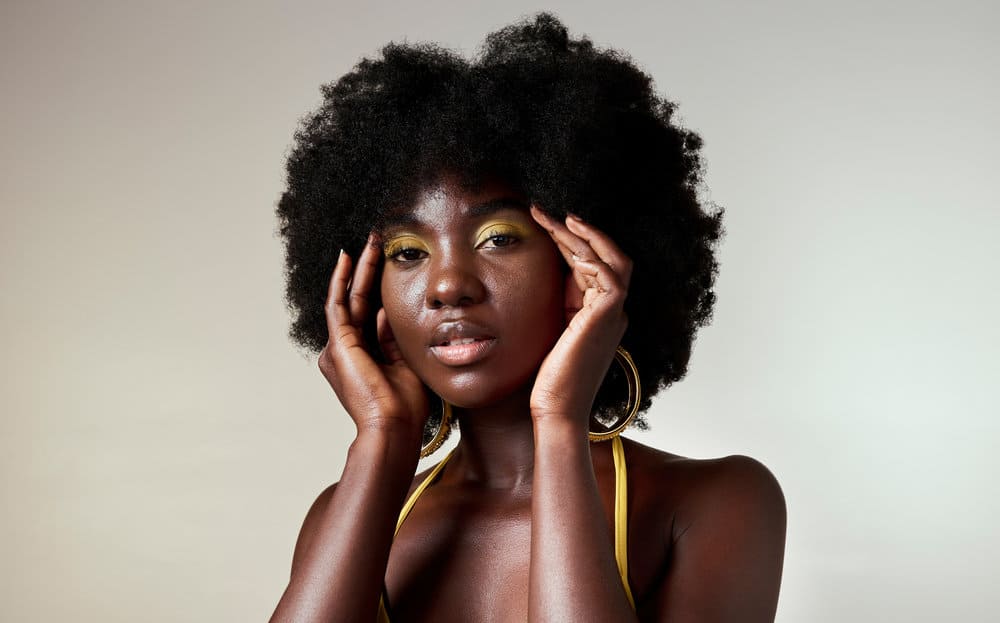
How to Add Heat to Your Deep Conditioning Regimen
Now that you realize how important it is to add heat to your low porosity 4C deep conditioning regimen, let's get into a few ways that you can do so:
Use a Hair Steamer
A hair steamer is a hair tool that produces steam. The Q-Redew steamer is one of the most well-known hair steamers of all of them. With a handheld steamer, you'll move the steamer around your head repeatedly to get the benefits of the steam.
But if you go with a thermal steamer cap, all you'll have to do is put it on, turn on the steamer function, and wait.
Use a Hooded Dryer
A hooded dryer is an electric dryer that you either put on or sit under. If you have a hooded dryer at home, put it to work. It's a great way to add heat to your deep conditioning regimen without doing any extra work.
Simply turn the hooded dryer on and sit under it or put it on. Ensure that your deep conditioner-coated hair is covered in a plastic processing cap, or else the hot air will dry your hair out.
Put on a Microwave Heat Cap
Microwave heat caps are designed to give you a great deep conditioning treatment without cords or batteries. You'll throw the conditioning cap in the microwave for up to 2 minutes, put the cap on your deep conditioner-coated hair, and wait for your deep conditioner to do its thing.
People love microwave hot caps because they are more affordable than hooded dryers and steamers in most cases.
Wrap Your Head in a Hot Towel
Don't want to shell out cash for any of the previous tools or supplies? You don't have to. That is if you have a large towel - which virtually everyone does.
To use it to add heat to your deep conditioning sessions, you'll drench the towel in water, squeeze out the excess, and then put it in the microwave for up to a minute.
When you take the towel out, it'll be warm. With your hair already coated in your deep conditioner, you'll put on a plastic cap and then wrap your head in the hot towel. This should be enough to warm up your hair and open up your hair cuticles.
Though it can take a lot of work to get your deep conditioner to give your low porosity 4C hair the nourishment it needs, it's 100% worth it if you have length goals you want to reach.
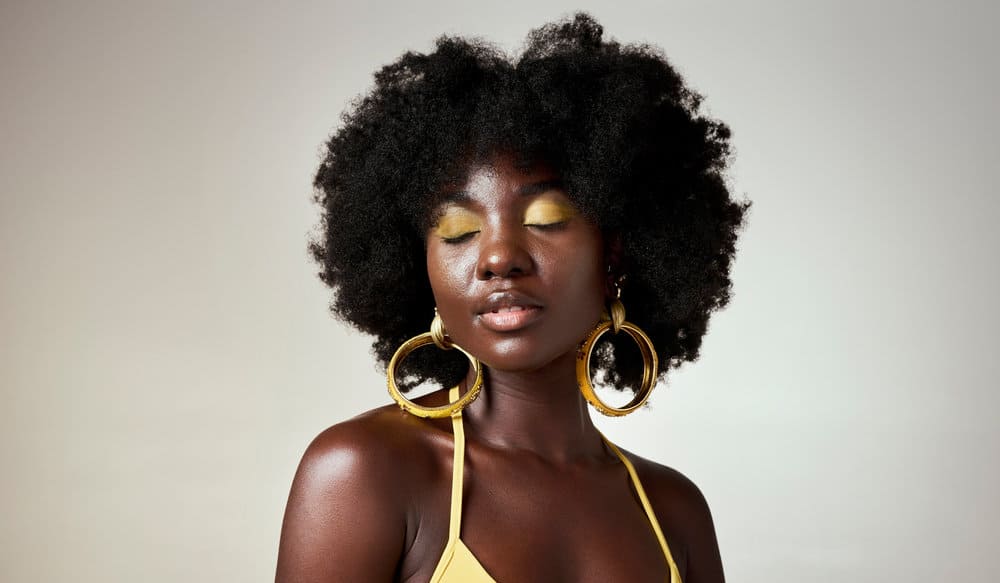
Deep Condition Often
Not only should you deep condition your hair with heat, but you should also deep condition it often. One deep conditioning session a month is rarely enough for a head of 4C hair, especially if it's low porosity.
Your strands need a pick-me-up regularly to stay healthy and grow to new lengths.
Once a week or two is a good deep conditioning frequency to start with. If biweekly deep conditioning sessions aren't enough, move to weekly sessions. You shouldn't need to deep condition your 4c low porosity hair more often than that.
If you find that you do, it could be that you're deep conditioning it incorrectly or that there's something else going wrong in your hair regimen.

Deep Condition Correctly
You may be tired of hearing about deep conditioning by this point, but if there's one thing you should know about caring for 4C low porosity hair, it's that it needs proper deep conditioning.
If you're not mindful about how you deep condition, you won't reach the length goals you have in mind. Here's how to deep condition your hair correctly (note that you should shampoo your hair before your get started):
- Get your hands on a super moisturizing water-based deep conditioner. It also helps if the product has some sort of humectant, like glycerin, in it. You want to bring as much moisture into your hair as it can handle. Stay away from deep conditioners with super-heavy oils like castor oil for this purpose; they won't be able to penetrate your hair like lighter-weight oils can. Those with argan oil, coconut oil, and sweet almond oil are all good choices. If you're ever searching for deep conditioners for your hair online, you can be specific. Search "deep conditioner for low porosity hair" and see what comes up. One of the best deep conditioners for low-porosity hair is the tgin Rose Water Hydrating Hair Mask.
- Part your hair into at least 4 sections. That way, you'll be able to get the deep conditioner all over your hair. Sectioning your hair will also make your curls easier to manage. Braid up each section or secure it with a clip.
- Free one of the sections and begin applying your deep conditioner. Focus the deep conditioner on the ends of the hair, as they are the oldest and driest. Gently comb through your hair with your fingers or a wide tooth comb to ensure that the deep conditioner doesn't miss any strands. You'll also appreciate how slippery your hair gets while it's coated in the deep conditioner - it'll make the detangling process a cinch.
- Apply the deep conditioner to the rest of the sections and detangle them.
- Add heat to your hair to open up your hair cuticles. Sit under your hooded dryer, pull out your hair steamer, etc. Apply heat to your hair for up to 45 minutes to aid in product absorption and soften your hair.
- Rinse the deep conditioner from your hair and proceed with the rest of your hair care and styling processes.
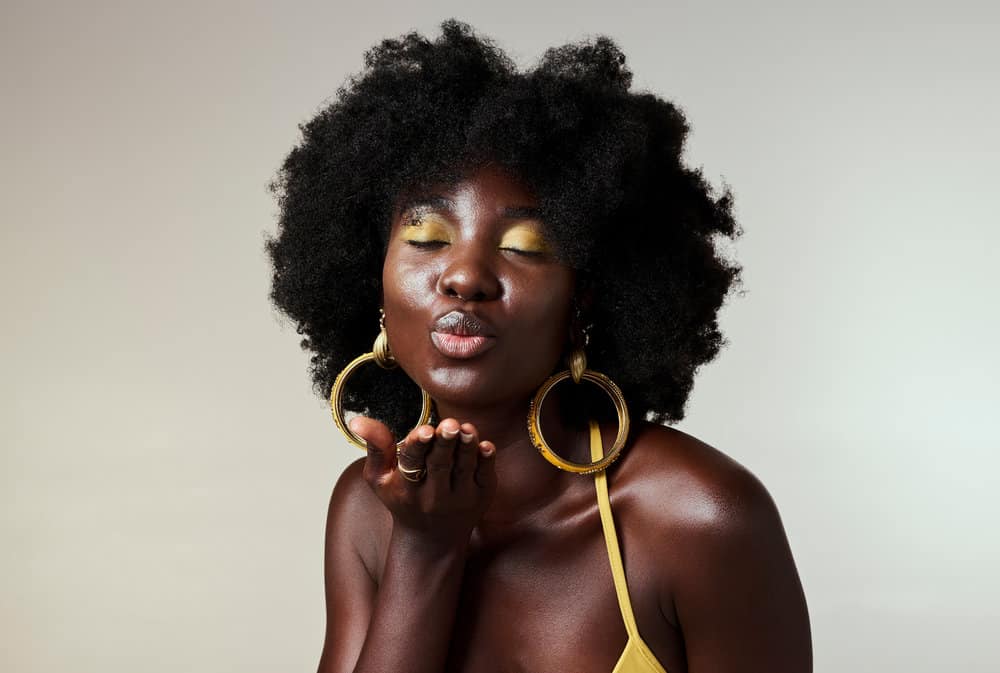
Be Careful About How You Style Your Hair
Many people with 4C low porosity hair find that protective styles work best for them. And if you prefer protective styles, we're sure you've got good reason.
Even so, you've got to be super careful how you style your hair if you want it to grow. Here are some tips to keep in mind:
- Forego any hairstyle that's too tight. Tight hairstyles can be counterproductive to your hair growth goals. They put unnecessary tension on your hair follicles and can result in hair loss, traction alopecia, or increased shedding. So, opt instead for hairstyles that don't put pressure on your scalp.
- Go for low-manipulation hairstyles. 4C hair is the most fragile hair type of them all. And hairstyles that require a ton of blow drying, brushing, combing, or braiding can put too much stress on your strands and cause breakage at any point along the hair shaft. So, if you want to maximize your hair growth potential, you've got to stay away from high-manipulation hairstyles. Low-manipulation hairstyles are the much better choice. They are simpler, don't take much time to complete, and don't require you to fight against your texture with a lot of tools. Styles like Bantu knots, low buns, and high puffs are great low-manipulation styles you should try.
- Be careful when detangling. Since low porosity 4C hair is fragile, it pays to be gentle when detangling your hair before styling. Don't comb through your hair roughly, and avoid detangling the hair when it's dry. Only detangle your hair in the shower while it's wet and coated in a slippery conditioner or detangling cream. Doing so will reduce breakage and split ends, so you can see more length over time.

Choose Lightweight Products
Those with 4C hair are often told that they should use heavy products on their hair to keep their strands moisturized. But that's not the best course of action, especially if you have low-porosity hair.
Heavy hair moisturizers and other hair care products will only sit on top of low-porosity hair because of its tightly packed cuticles.
If you use lighter products, there's a higher probability of the products being absorbed into the hair instead of simply sitting on top of it. That way, you can give your hair the topical nourishment it needs to be healthy. And the healthier your hair is, the more length you'll see over time.
*In addition to choosing lightweight products, you should also ensure that they are water-based whenever it's feasible. Water-based products are usually thinner and more easily absorbed by low-porosity hair.

Keep Buildup at Bay
Buildup is easy to come by when you have low porosity 4C hair. Hair products tend to build up on this hair type because (1) the hair repels moisture and products, and (2) because people with 4C hair often apply a lot of product to tame their hair.
Unfortunately, when buildup is left to sit on the hair, it makes the hair even more resistant to the products you put on it. Why? Because buildup acts as a film and blocks things from getting into the hair.
This is awful for anyone's hair, but especially for 4C hair, which is already starved for moisture in most cases. It makes the hair dry, brittle, and prone to breakage - this places you that much farther from your hair length goals.
To prevent your hair from developing buildup, you'll want to do a clarifying shampoo treatment every so often - once a month is about standard.
When you do so, you'll apply the clarifying shampoo as you would any other shampoo and massage it thoroughly with the pads of your fingers in a circular motion. Then, you'll leave the product to sit for a few minutes while it does its work, rinse, and only repeat if necessary.
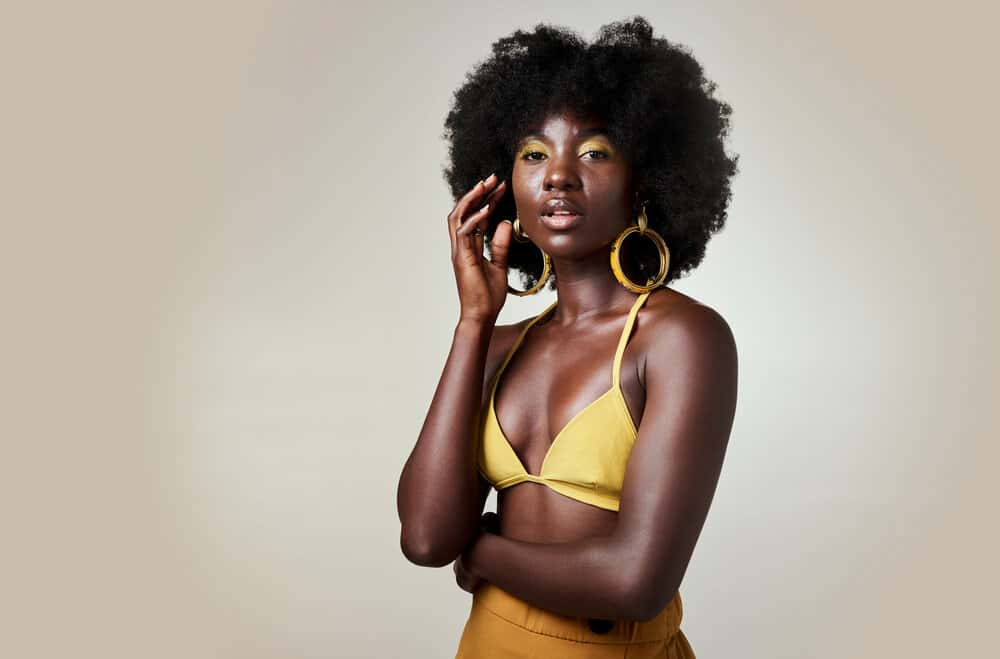
Minimize Heat Application
Heat tools like flat irons and curling wands are great for styling low-porosity 4C hair. They can help you tame your unruly strands and achieve new looks you wouldn't be able to try otherwise.
But every time you use heat on your hair, there's a chance you can damage it and stunt your hair growth. Way too often, it does more harm than good to your delicate hair type.
So, whenever you can avoid heat, do so. If you must use heat, make sure to protect your strands with a thermal heat protectant and keep the temperatures below 400°F (204°C). Setting your heat tool temperature too high is sure to cause heat damage at some point.

Avoid Chemical Processing
Chemical processing like hair relaxers, texturizers, and bleaching can wreak havoc on low porosity 4C hair. The chemicals in these treatments strip the hair of its natural oils and damage its structure, making it drier and more fragile than before.
This increases your chances of hair breakage.
Bleach and relaxers are some of the harshest chemical treatments out there - they can easily and permanently damage your hair's structure, thwarting your hair growth efforts.
Even if you do manage to get away with a chemical treatment without seeing your hair break off, you could see the damage down the line. So, if you're looking to grow your hair, it's best to avoid these treatments altogether.
But if your heart is set on a chemical treatment, make sure you go to an experienced stylist who can work with your hair type and help you achieve your desired results without a ton of damage.
- Best Oils for Low Porosity Hair
- Low Porosity Hair Routine
- Moisturizer for Low Porosity Hair
- What Is Porosity?
So, there you have it - several proven remedies to help you grow your low porosity 4c hair. We hope that you found all the information you were looking for, and we wish you the best with your hair growth journey!




